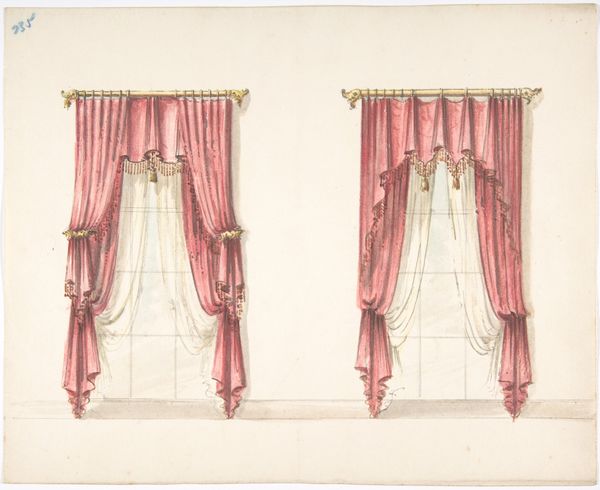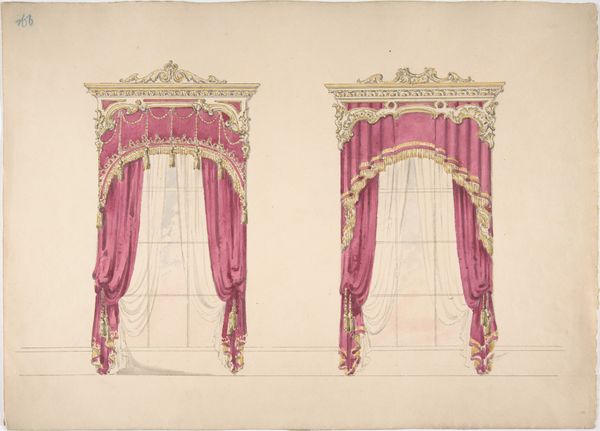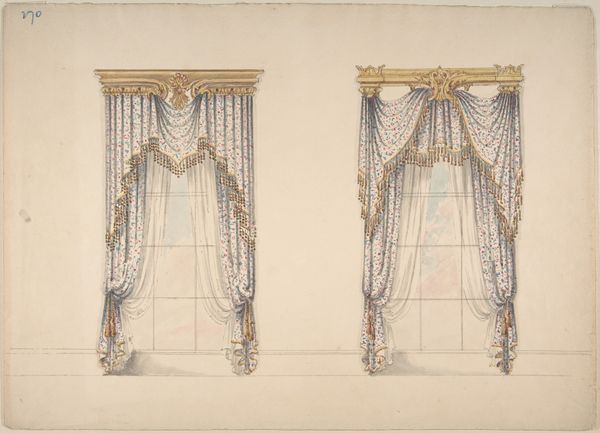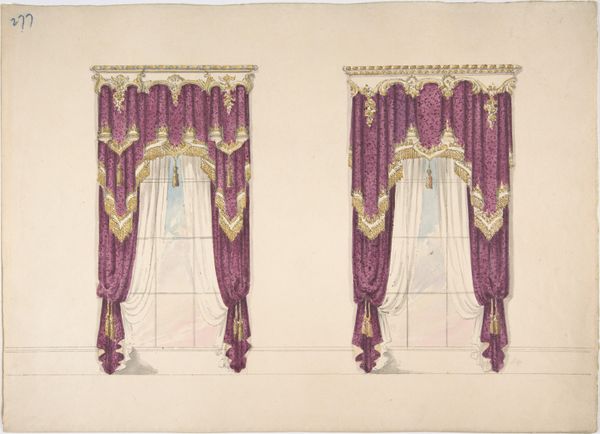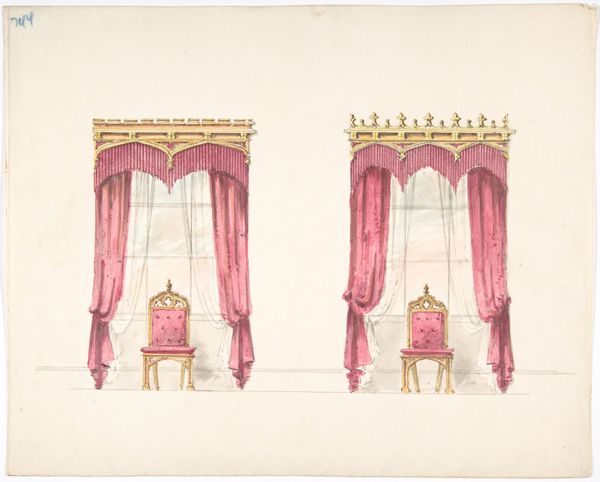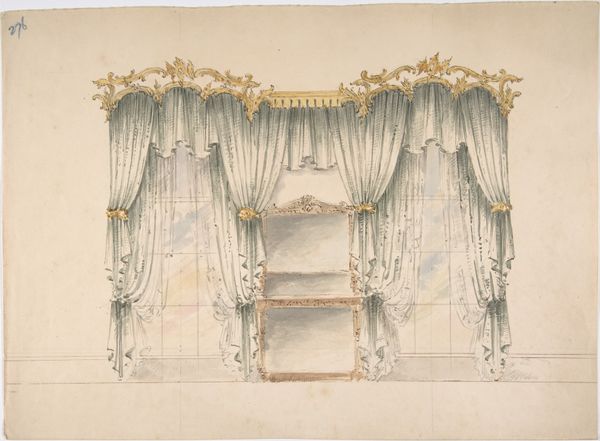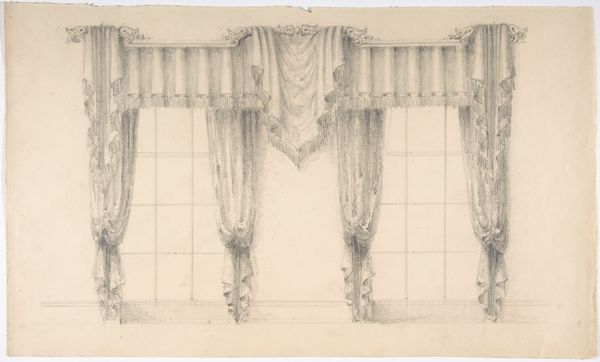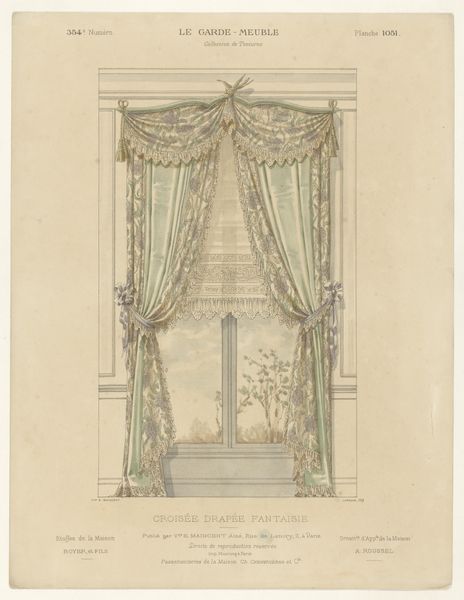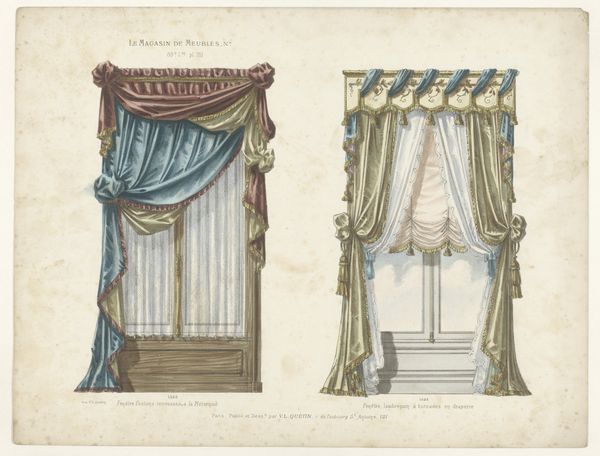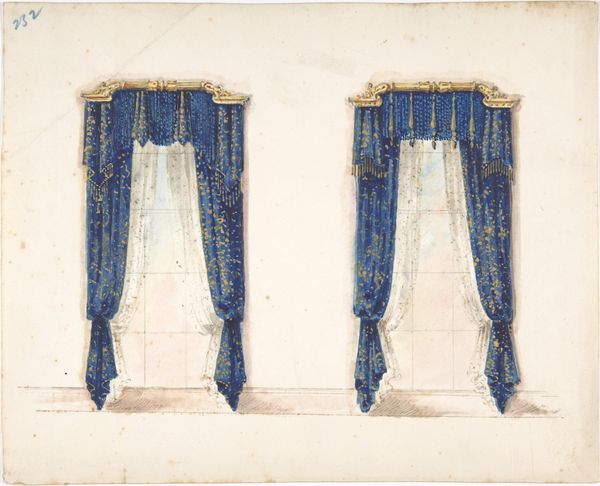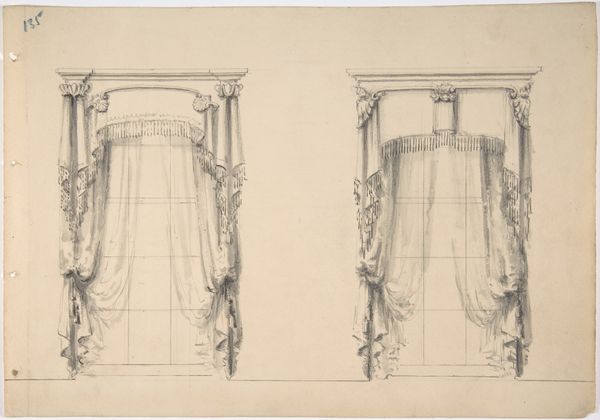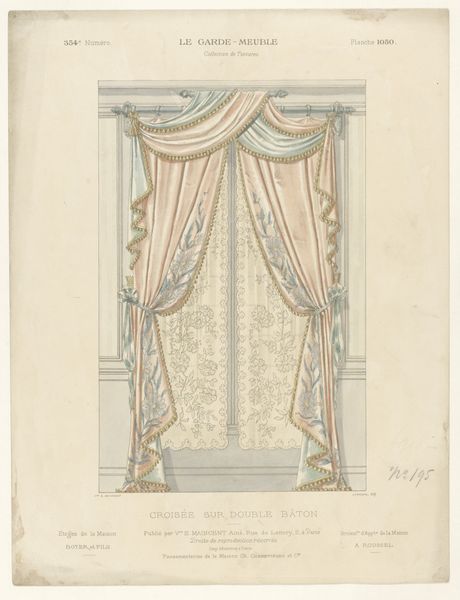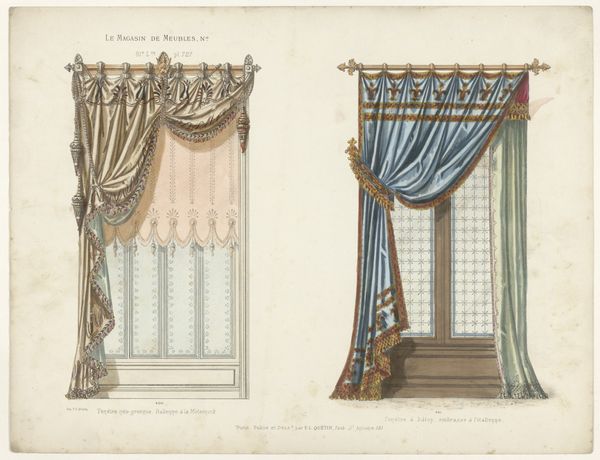
Design for Gold Curtains with Gold Fringes and a Gold and White Pediment 1800 - 1850
0:00
0:00
drawing, tempera, print, pencil
#
drawing
#
neoclacissism
#
muted colour palette
#
tempera
# print
#
historical fashion
#
pencil
#
history-painting
#
decorative-art
#
watercolor
Dimensions: sheet: 10 13/16 x 14 15/16 in. (27.4 x 38 cm)
Copyright: Public Domain
Curator: Here we have an intriguing piece titled "Design for Gold Curtains with Gold Fringes and a Gold and White Pediment," likely dating from somewhere between 1800 and 1850. Its authorship is, unfortunately, anonymous. Editor: Well, my first impression is one of opulent restraint. The color palette is so muted, almost grayscale, but the proposed design screams luxury. Curator: Exactly! That tension is palpable. Given the period, and the stylistic nod to neoclassicism, this drawing provides insight into the aspirational decor of the burgeoning bourgeoisie. Imagine these installed in a salon meant for political discourse. Editor: I'm fascinated by the rendering. Look closely at how the folds of fabric are depicted using pencil, tempera, and watercolor. It really draws your attention to the labor involved in producing the materials, the skill required to translate design to tangible goods. Those fringes suggest incredibly intricate work. Curator: Indeed. The attention to detail hints at a specific patron, perhaps someone keen to display wealth and cultivated taste through the textiles themselves. It also points to the crucial role interior design played in shaping social hierarchies during this era. Think about how this vision of decorative art reinforces certain social structures. Editor: You are right. We're considering everything required for this design: the sourcing of gold thread, the weaving of the fabric. It presents interesting questions about labor conditions at the time. I find it hard to appreciate the refinement and not consider the means to acquire these precious materials and skillful manufacture. Curator: Absolutely, and it reminds us that artistic expression is almost always linked to the power dynamics of its historical moment. The elite commissioned luxury goods not just for personal enjoyment, but to communicate social dominance. Editor: In the end, considering this design sketch forces us to confront how objects both reflect and shape social conditions. What appears delicate has profound social implications. Curator: A powerful example of the dialogue between design, history, and the material world. Thank you.
Comments
No comments
Be the first to comment and join the conversation on the ultimate creative platform.
